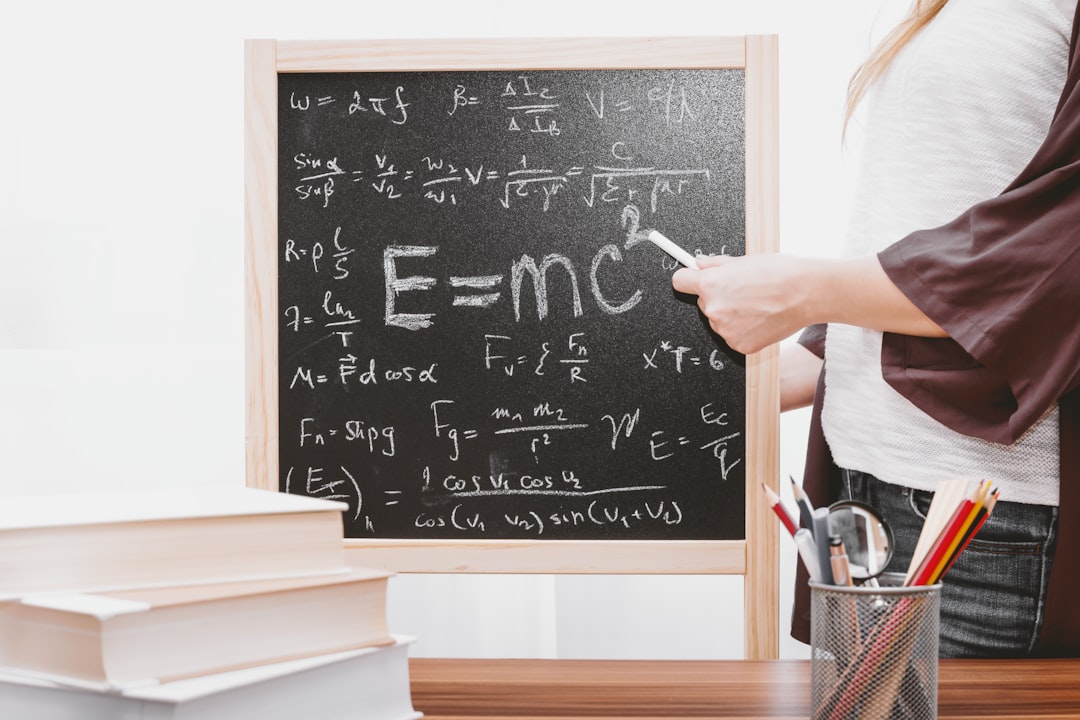Support our educational content for free when you buy through links on our site. Learn more
What are the 5 Teaching Methods? [2024]
Have you ever wondered what the best teaching methods are? As educators, we are constantly searching for innovative and effective strategies to engage our students and help them succeed. In this article, we will explore the top 5 teaching methods that have proven to be successful in the classroom. Whether you are a new teacher looking for fresh ideas or a seasoned educator wanting to enhance your instructional practices, these methods are sure to inspire you. So, let’s dive in and discover the 5 teaching methods that will transform your classroom!
Quick Answer
The 5 teaching methods that we will explore in this article are:
- Student-Centered Discussions
- Making Connections
- Increased Autonomy
- Building Relationships
- A Focus on Literacy
Now, let’s take a closer look at each of these methods and how they can benefit your students.
Quick Tips and Facts
Before we delve into the details, here are some quick tips and facts about these teaching methods:
- These methods can be used across grade levels and subject areas.
- They promote active learning and student engagement.
- They encourage critical thinking and problem-solving skills.
- They foster a positive classroom environment and build strong relationships between teachers and students.
- They can be adapted to meet the needs of diverse learners.
Now that we have a general understanding, let’s explore each teaching method in more depth.
1. Student-Centered Discussions
Student-centered discussions are a powerful way to promote active learning and encourage student participation. Instead of the traditional teacher-led lecture format, student-centered discussions allow students to take ownership of their learning and engage in meaningful conversations with their peers.
During these discussions, small groups of three or four students are created to answer questions or solve problems related to the topic being studied. This ensures that all students have an opportunity to participate and share their ideas. By actively engaging in discussions, students develop their comprehension, speaking, and listening skills.
Benefits:
- Increases student engagement and participation.
- Enhances critical thinking and communication skills.
- Improves comprehension and retention of information.
- Fosters a collaborative and inclusive classroom environment.
Drawbacks:
- Requires careful planning and facilitation to ensure all students have an opportunity to contribute.
- May take longer to cover content compared to traditional lecture-style teaching.
To implement student-centered discussions in your classroom, create a list of thought-provoking questions or problems related to the topic. Divide your students into small groups and provide them with the necessary resources to guide their discussions. As the facilitator, encourage active participation and ensure that all students have a chance to share their thoughts.
2. Making Connections
Making connections is a teaching method that aims to make learning interesting and relevant for students by relating it to real-life experiences. By connecting the content to their own lives, students are more likely to be engaged and motivated to learn.
For example, when teaching a play like “Macbeth,” you can focus on the idea of setting goals and examine how ambition can be both positive and negative. By discussing real-life examples of individuals who have achieved their goals or faced the consequences of their actions, students can make meaningful connections to the play and understand its relevance in their own lives.
Benefits:
- Increases student motivation and interest in the subject matter.
- Enhances critical thinking and problem-solving skills.
- Promotes a deeper understanding of the content.
- Helps students see the value and applicability of what they are learning.
Drawbacks:
- Requires careful planning and creativity to make relevant connections.
- May require additional time for discussion and reflection.
To incorporate making connections in your teaching, start by identifying real-life examples or scenarios that relate to the content you are teaching. Share these examples with your students and encourage them to discuss and reflect on the connections. This method can be applied to any subject area and grade level.
3. Increased Autonomy
Empowering students with increased autonomy in their learning is a teaching method that promotes student agency and ownership. By giving students choices and allowing them to make decisions about their learning, they become more engaged and invested in the process.
One way to implement increased autonomy is by providing students with options when completing assignments or projects. For example, instead of assigning a specific essay topic, allow students to choose from several prompts. Similarly, for research papers or projects, let students select their own topics within the scope of the curriculum.
Benefits:
- Increases student motivation and engagement.
- Develops critical thinking and decision-making skills.
- Fosters a sense of responsibility and independence.
- Encourages creativity and personal expression.
Drawbacks:
- Requires clear guidelines and expectations to ensure students stay on track.
- May require additional time for individualized feedback and assessment.
To incorporate increased autonomy in your classroom, provide students with clear guidelines and expectations for their assignments or projects. Offer choices that align with the learning objectives and allow students to take ownership of their learning. Provide support and guidance as needed, and encourage students to reflect on their choices and the impact on their learning.
4. Building Relationships
Building relationships in the classroom is a fundamental teaching method that has a profound impact on students’ behavioral and academic success. When students feel connected to their teacher and peers, they are more likely to be engaged, motivated, and willing to take risks in their learning.
Teachers can build relationships with their students by creating a positive and inclusive classroom environment. This can be achieved through various strategies, such as meeting with students during office hours, providing opportunities for one-on-one interactions, and implementing team-building projects like student videos or collaborative assignments.
Benefits:
- Enhances student engagement and participation.
- Improves classroom management and behavior.
- Increases student confidence and self-esteem.
- Fosters a supportive and inclusive learning community.
Drawbacks:
- Requires time and effort to establish and maintain relationships.
- May require additional resources or support to meet individual student needs.
To build relationships in your classroom, take the time to get to know your students on a personal level. Show genuine interest in their lives, listen actively, and provide support and encouragement. Create opportunities for collaboration and teamwork, and foster a positive and respectful classroom culture.
5. A Focus on Literacy
A focus on literacy is a teaching method that emphasizes the importance of reading and writing in all subject areas. By providing students with reading material that interests them and helps them understand the joys of reading for pleasure, teachers can foster a love for literacy and improve students’ reading and writing skills.
Incorporating a wide variety of texts, such as novels, short stories, articles, and poetry, into the curriculum can expose students to different genres and styles of writing. Additionally, ensuring that the classroom is well-stocked with books that young adults enjoy can create a positive reading culture and encourage independent reading.
Benefits:
- Improves reading comprehension and fluency.
- Enhances writing skills and vocabulary.
- Develops critical thinking and analysis skills.
- Fosters a love for reading and lifelong learning.
Drawbacks:
- Requires access to a wide range of reading materials.
- May require additional time for independent reading and writing activities.
To implement a focus on literacy in your classroom, provide students with a variety of reading materials that align with their interests and reading levels. Create opportunities for independent reading and book discussions, and incorporate writing activities that allow students to express their thoughts and ideas. Encourage students to explore different genres and authors, and celebrate their reading achievements.
FAQ
What are the 5 major approaches in teaching?
The 5 major approaches in teaching are:
- Direct Instruction: This approach involves explicit teaching and direct guidance from the teacher.
- Inquiry-Based Learning: This approach encourages students to explore and discover knowledge through inquiry and investigation.
- Cooperative Learning: This approach promotes collaboration and teamwork among students to achieve learning goals.
- Problem-Based Learning: This approach focuses on solving real-world problems and applying knowledge to practical situations.
- Differentiated Instruction: This approach involves tailoring instruction to meet the diverse needs and learning styles of students.
Read more about “What are the 6 Management Techniques That a Teacher Should Develop? …”
What are the 5 ways to teach?
The 5 ways to teach are:
- Lecturing: This traditional teaching method involves the teacher presenting information to students through verbal instruction.
- Demonstrating: This method involves showing students how to perform a task or solve a problem through visual or hands-on demonstrations.
- Facilitating: This method involves guiding students through the learning process by asking questions, providing support, and facilitating discussions.
- Collaborating: This method involves promoting collaboration and teamwork among students to learn from each other and solve problems together.
- Coaching: This method involves providing individualized support and guidance to students to help them achieve their learning goals.
Read more about “… Your Ultimate Guide to the Top 10 Teaching Methods for Primary School”
What are the 5c teaching methods?
The 5c teaching methods are:
- Communication: This method focuses on developing students’ communication skills through speaking, listening, reading, and writing activities.
- Collaboration: This method promotes collaboration and teamwork among students to achieve learning goals and solve problems together.
- Critical Thinking: This method encourages students to think critically and analyze information to solve problems and make informed decisions.
- Creativity: This method fosters creativity and innovation by encouraging students to think outside the box and explore new ideas.
- Citizenship: This method emphasizes the development of responsible and engaged citizens who contribute positively to their communities.
Read more about “What Are the Four Types of Instructional Methods? …”
What are the 3 main teaching styles?
The 3 main teaching styles are:
- Authoritarian: This teaching style is characterized by strict discipline, high expectations, and a focus on teacher-led instruction.
- Permissive: This teaching style is characterized by a relaxed and informal approach, allowing students to have more freedom and autonomy in their learning.
- Authoritative: This teaching style combines elements of both authoritarian and permissive styles, with a balance of structure, guidance, and student-centered learning.
Read more about “… Modern Methods of Teaching: Revolutionizing Education in the Classroom”
Conclusion
In conclusion, the 5 teaching methods we explored in this article – student-centered discussions, making connections, increased autonomy, building relationships, and a focus on literacy – are powerful strategies that can transform your classroom and enhance student learning. By incorporating these methods into your instructional practices, you can create an engaging and inclusive learning environment that fosters critical thinking, collaboration, and a love for learning.
Remember, teaching is a dynamic and ever-evolving profession, and it’s important to continuously explore new strategies and adapt them to meet the needs of your students. So, embrace these teaching methods, experiment with them in your classroom, and watch your students thrive!
Recommended Links
- Instructional Coaching
- Lesson Planning
- Classroom Management
- Differentiated Instruction
- 10 Effective DAP Teaching Strategies 2024



